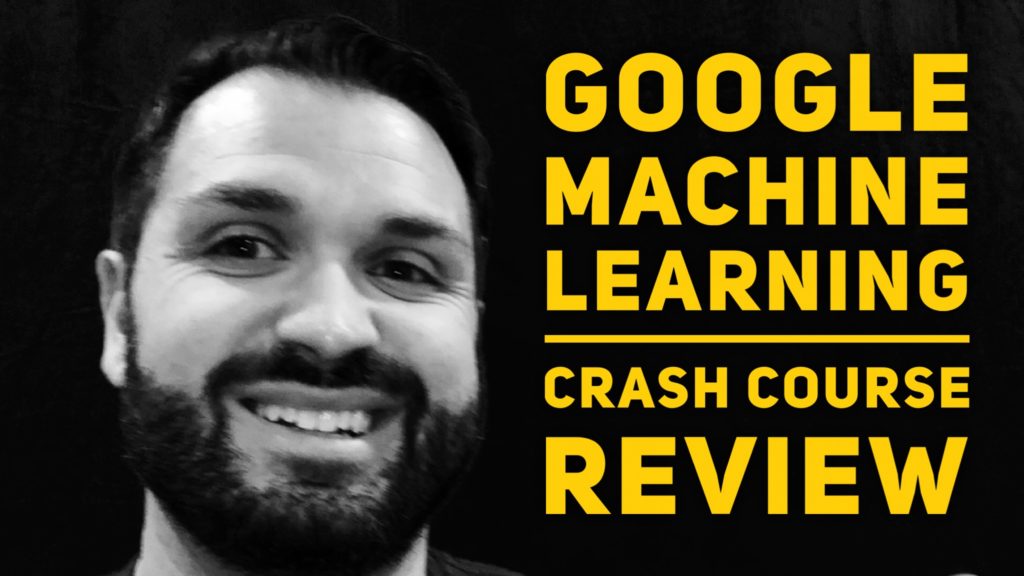Learn Machine Learning From Google
Learning Machine Learning or Deep Learning can be hard! There are a ton of resources out there to help but which ones are going to help you accelerate your knowledge in Machine Learning? Recently I went through the Google Machine Learning Course and absolutely loved it! The Crash Course is a free and self paced course from Google in an attempt to help close the Machine Learning talent gap. So how does the Google Machine Learning Crash Course stack up against Andrew Ng’s Machine Learning Course? Also will this course help you in a Data Engineer role? Find out the answer to these questions in this special episode of Big Data Big Questions Review Google Machine Learning Crash Course.
Transcript – Review Google Machine Learning Crash Course
Today is another episode of Big Data Big Questions. Today I’m going to talk about a little more education, where we’re talking about what’s going on with the Google Machine Learning Crash Course. It’s a course that I went through, and I’ve been going through it, and I thought I would share with everyone out there and tell them, hey! What’s in this course, why you should take it, how long it should take, and how awesome is it?
The Google Machine Learning Crash Course. What is it? It’s Google’s way, and it’s a free course, so very important. Free course. You can go out there. It’s in the comments section or description here below. Gives you an opportunity to go out and learn. It’s a free course around machine learning, and it really dives into the approach to machine learning, even the basics around what machine learning is, but then it also starts diving into some of the more mathematical concepts. It still keeps it high-level enough where you don’t feel like you’re going deep, but you have an understanding.
Like I said, some math functions and everything, but a lot of it on the application side. It’s broken into 25 different lessons. They were saying, they talked about how it’s 15 hours to complete. I don’t think it takes 15 hours so much. It’s something I was able to knock out doing 30 minutes a day for, I want to say I knocked it out in two and a half, maybe three, weeks. Very interactive, though. It gives you the opportunity. We’re not just watching a video. You’re not just reading. You’re actually getting hands-on with some code. You go through, and you can do it all from your browser, so you’re not having to download, or import, or install anything. You’re able to use Jupiter Notebooks that they host on GCP. As you go through those, you can actually go in and test out some code. Whether it’s all in Python, so you’re using Pandas or even Tensorflow in some areas, pretty cool. They give you the data sets to go through it. I think it’s a very valuable lesson. It’s, like I said, free for 30 minutes a day. It’s worth the opportunity to go in and just look. Find out what’s going on and get some level of understanding.
One of the things I like most about it is, it’s actually put on by the people that are involved in various projects in Google. You get to learn from the data engineers and data scientists at Google around their approach to how to implement these and walk through. Like I said, not always just video. Some of it has reading. Then you have code to back it up. It’s definitely something that’s awesome.
What did I learn in this course? Probably the most important thing that was really stressed in helping me understand was how to fight and how to combat bias in your machine learning code. Specifically around bias. Not bias like we have as humans around, hey! I’m biased to loving data engineers. It’s not that kind of bias, but even bias with your data. How hard it really is to have good data sets that are not going to be biased, because everything, you can’t train with every piece of data in the world. One, we don’t have it all documented yet and in a place to do that.
You’re always limited with what you have in your data set. You always want to make sure that you’re not training models specific to this data set so that when you go out and implement them in the real world, and they get different data sets, that they’re more accurate. There’s a lot of steps and a lot of things that they talk about, about preventing bias and really understanding it. Really, for me, that was a huge, important concept to really understand, and one of the reasons that I really like the course. Actually went through it a couple of times, took a ton of notes. My recommendations are go through it, make sure you take notes, and then go through the course. Let me know what you think about the course. If you go through the course, make sure you put in the comments section here below.
If you have any questions for Big Data Big Questions, put them in the comments section here below. I will do my best to answer those, and let me know, like I said, if you take the course, how did you feel about it? Did you like it? Am I totally off-base? I will see you again next time on Big Data Big Questions.
